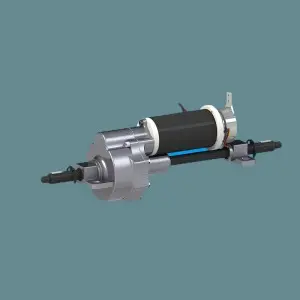When it comes to automotive terminology, there are often confusing and overlapping terms used to describe different parts of a vehicle’s drivetrain. One example is the term transaxle and gearbox. While they both play a vital role in transmitting power from the engine to the wheels, they are not the same thing.
To understand the difference between a transaxle and a transmission, it’s important to first understand the role of each component and how they are integrated into a vehicle’s driveline. Let’s start by defining each term and then dive into their differences.
A transaxle is a special type of transmission that combines the functions of the transmission, differential and axle into a single integrated unit. This means that the transaxle not only changes the gear ratio to allow the engine to transfer power to the wheels, but it also distributes that power to the wheels and allows them to turn at different speeds when cornering or cornering. Transaxles are commonly used in front-wheel drive and all-wheel drive vehicles because they provide a compact and efficient way to package driveline components.
On the other hand, a gearbox, also called a variator, is the component that changes the gear ratios to transfer power from the engine to the wheels. Unlike a transaxle, a transmission is a self-contained unit that does not include a differential or axle components. Transmissions are commonly found in rear-wheel-drive vehicles because of their ability to transfer power to the rear wheels without the need for additional components in a transaxle.
So, to answer the original question: is a transaxle the same as a transmission, the answer is no. While both components are responsible for transferring power from the engine to the wheels, a transaxle integrates the transmission, differential, and axle into a single unit, while a transmission is a separate transmission component that does not include the differential and axle.
It’s important for car owners to understand this distinction because it affects how they maintain and repair their vehicles. For example, when replacing a transaxle or transmission, the process and cost can vary significantly due to differences in components and their integration into the vehicle’s driveline.
Additionally, knowing whether a vehicle has a transaxle or transmission can also affect its handling and performance on the road. Vehicles equipped with a transaxle tend to have a more compact, more efficient drivetrain layout, which results in better handling and more interior space. On the other hand, a vehicle equipped with a transmission may have a more traditional drivetrain layout, which may affect the vehicle’s weight distribution and overall balance.
In summary, while the transaxle and transmission are both important parts of a vehicle’s drivetrain, they are not the same thing. A transaxle is an integrated unit that combines the functions of a transmission, differential and axle, while a gearbox is a separate transmission component. Understanding the differences between these two components can help vehicle owners make informed decisions regarding maintenance, repairs, and overall vehicle performance.
Post time: Feb-21-2024


